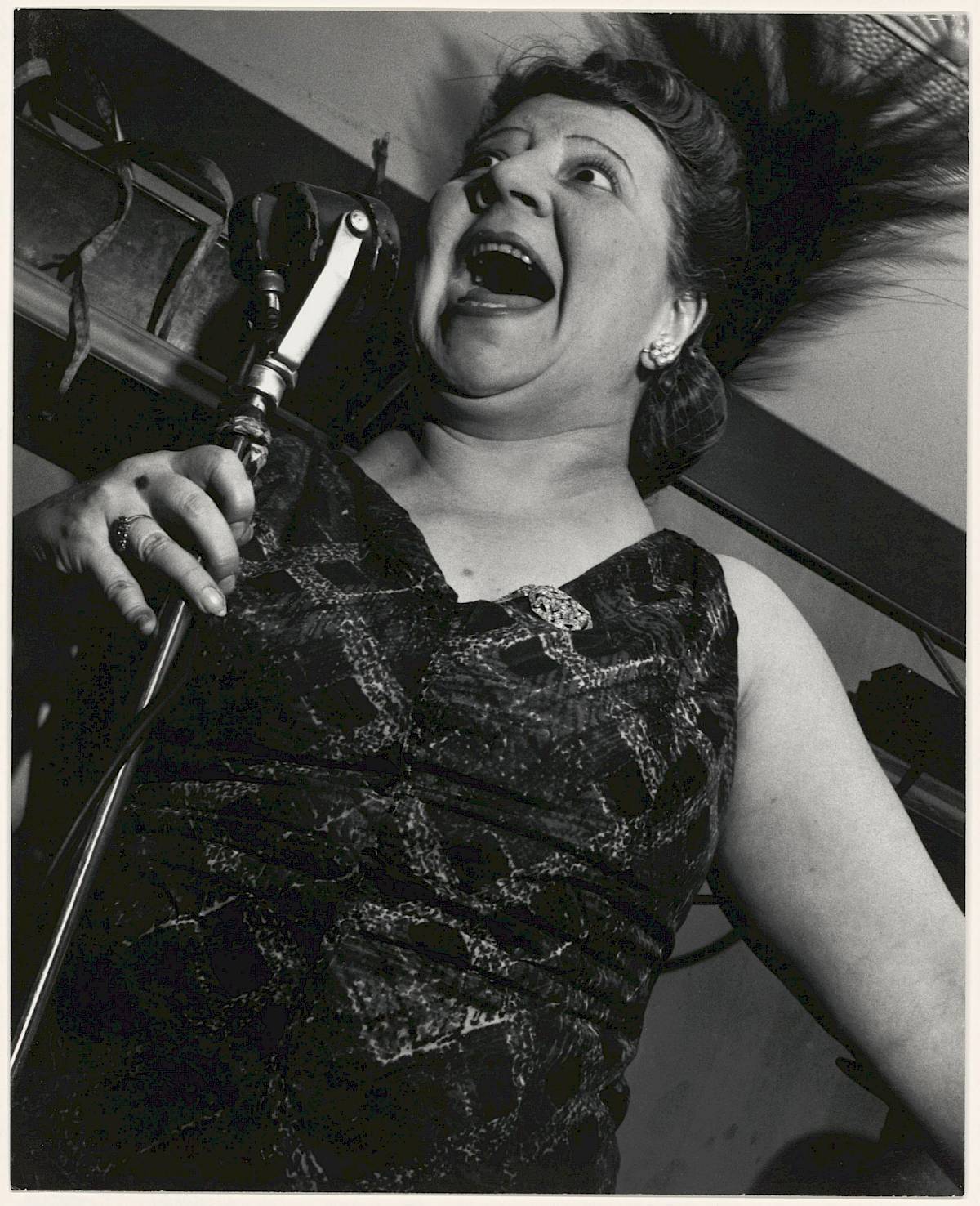History
The Photographic Collection of the ALBERTINA Museum is today’s largest and most important collection of artistic photography in Austria. Around 100,000 treasures of photographic history trace the field’s most significant developments and provide an introduction to genres including portrait, architecture, landscape, and street photography that ranges from the medium’s beginnings to the present day.

Photographs formed an integral constituent part of the special thematic collections of the house, and were supplying, in succession to the single-sheet woodcuts and reproduction engravings, the etched vedute or lithographed portraits, the most topical visual information from around the monarchy.
Gustav Jägermayer’s monumental series about the Eastern Alps featuring at its center the Grossglockner mountain (1863) found its way into the archive, as did, no less so, the voluminous album compiled by the Dutch photographer, Schoon, on the Lemberg-Czernowitz railways (from around 1868).
Even more representative in its format and execution is the documentation of the old Vienna city walls and their demolition during the years 1858 to 1860, as provided by the Austrian Imperial and Royal Court and State Printing House. Quite by contrast to this, the firm of R. Lechner (Wilh. Müller), acting somewhat as the first Vienna photo agency, supplied, on a weekly basis, small photographs of all topical events, such as inaugural celebrations, jubilees and catastrophes.

In the year 2000 the collection of the first school in the entire world to specialize in photography
and reproduction technology was passed to the ALBERTINA Museum on permanent loan. It comprises about 70,000 pictures, 15,000 books, as well as numerous cameras and other photographic accessories.
Founded in 1888 by the photographic chemist, historian and pedagogue, Josef Maria Eder, the school has in its possession, above all, a collection of model templates with extraordinary early examples of photographic techniques (including a copy of the first book ever to contain photographs, entitled “Pencil of Nature”, by William Henry Fox Talbot) as well as numerous daguerreotypes.
Beyond that, numerous examples of images from the experimental laboratories of the “The Graphic” [institute] have also been preserved, ranging from the first Austrian x-ray pictures through high-speed and micro photography to photo-chemical traces of electrical discharges.
From 1909 onwards, “The Graphic” furthermore became a center of Pictorialist photography, training some of its principal Austrian exponents, including Rudolf Koppitz, Antios (Anton Josef Třcka), Karel Novák and Trude Fleischmann, of whose works the collection holds numerous examples.

A further strong point of the collection is formed by the archive of the German publishing house of Karl Robert Langewiesche, taken over on permanent loan from the Austrian Ludwig Foundation for Art and Science. The publishers, who continue to exist to this day, set new book publishing standards with their series of photo books, "The Blue Books" ("Die Blauen Bücher") and "The Iron Hammer" ("Der Eiserne Hammer"). The main point of emphasis here, apart from art reproductions, lay on landscape and architecture photography of the 1920s to the 1940s. In the main what becomes visible is an outline of a, in part, German Nationalist (deutschnational) imaginary geography.
The roughly 13,000 photographs that make up this part of the collection also embrace the period up to the late 1950s and comprise many books never published, such as, for example, a photographic documentation by Ruth Hallersleben of life in the industrial region of the Ruhr. In addition, the archive also offers a behind-the-scenes glimpse of the publisher’s work with images. The photographs served as templates for printing and are, accordingly, marked with copious instructions to the retouch artist. Among these photographs may be found works by such representatives of the New Sobriety as Albert Renger-Patzsch, Paul Wolff and Lucia Moholy.

The ALBERTINA Museum today, thanks to a private patron, engages in an active purchasing strategy.
This made it possible, for example, to acquire the oldest Austrian daguerreotype (of June, 1840), depicting Vienna’s Court Riding School and the old Burgtheater (Court Theatre).
The holdings have been increased in many directions, ranging from the beginnings of the medium to the present.
Apart from consolidating existing holdings, a particular focus of the collection lies on acquisitions of street-life and documentary photography of the 20th century, of the sort associated with names such as Henri Cartier-Bresson, Lisette Model, William Eggleston, William Klein, Robert Frank, Stephen Shore and Jakob Tuggener.